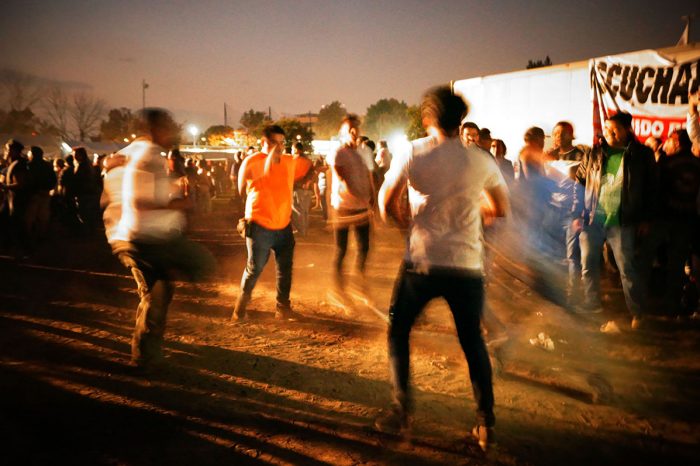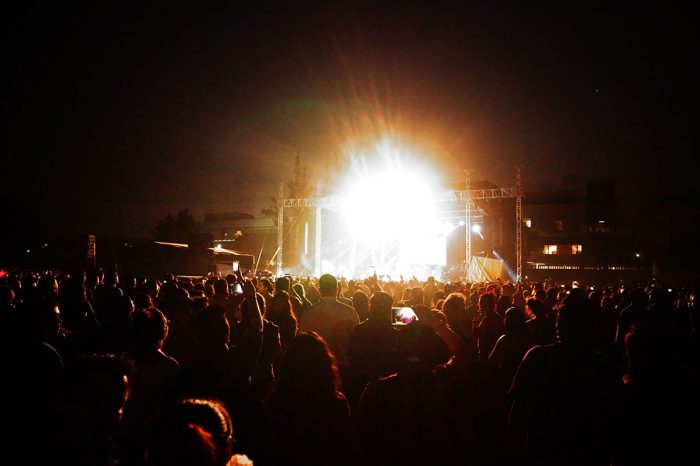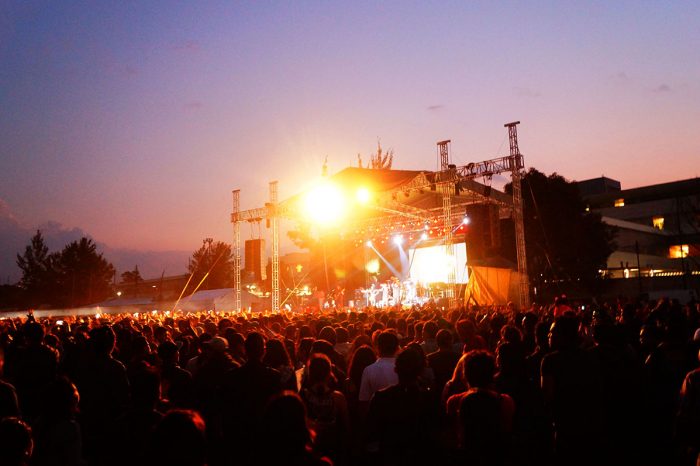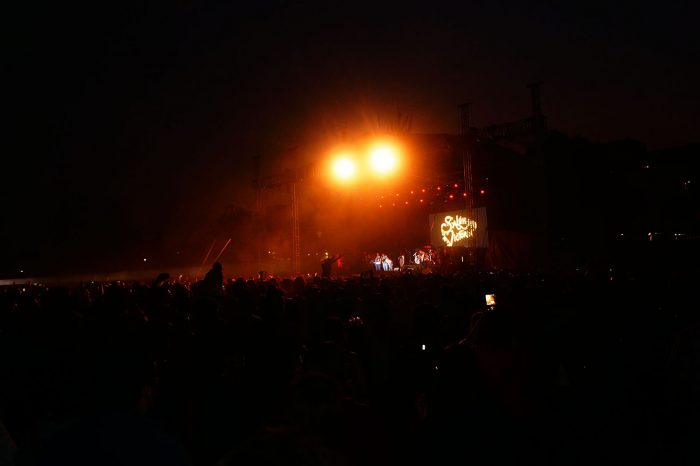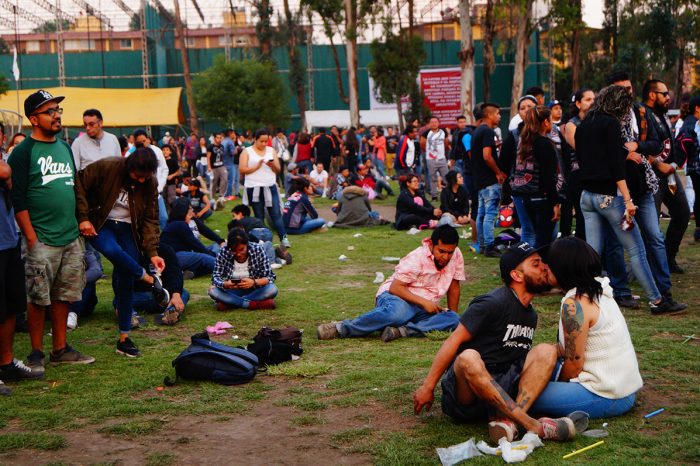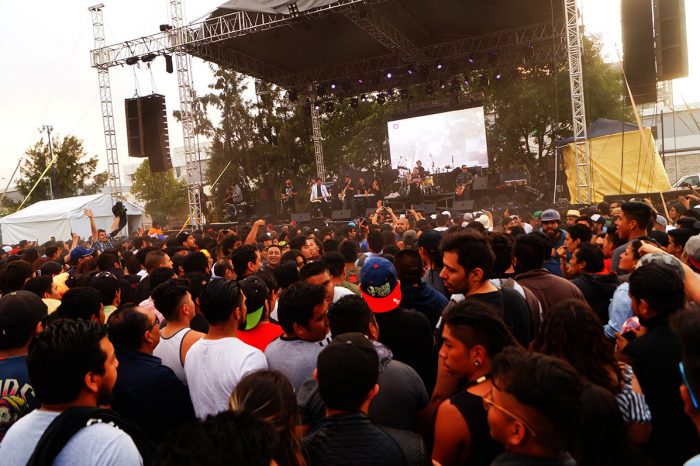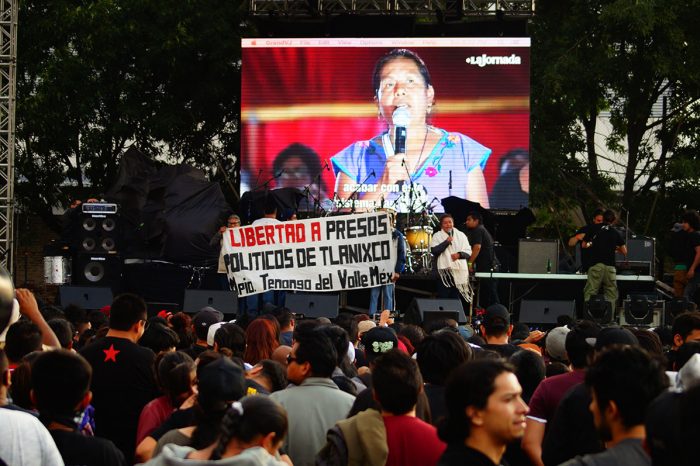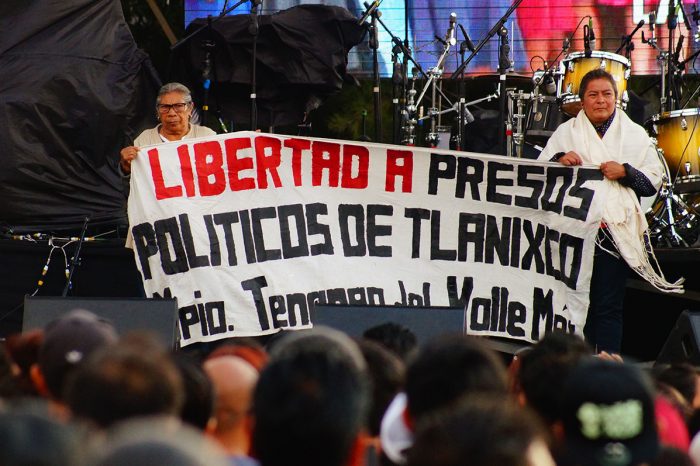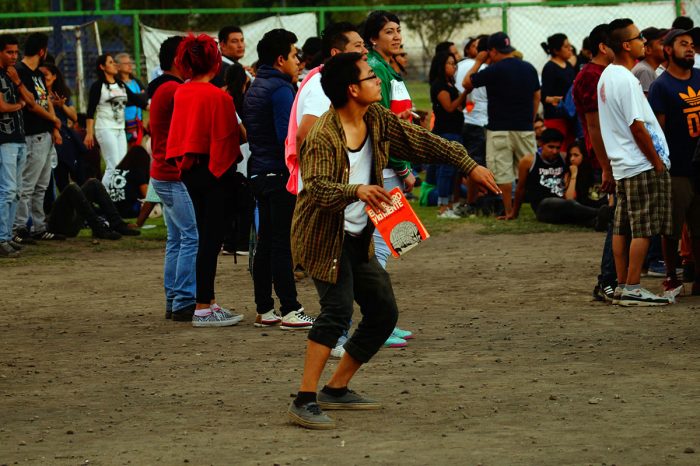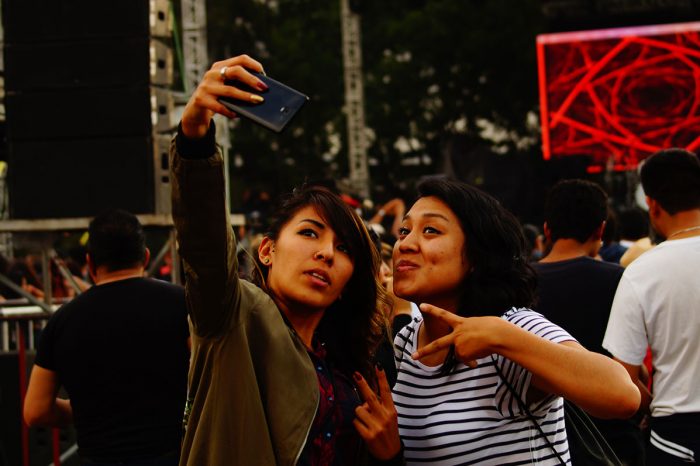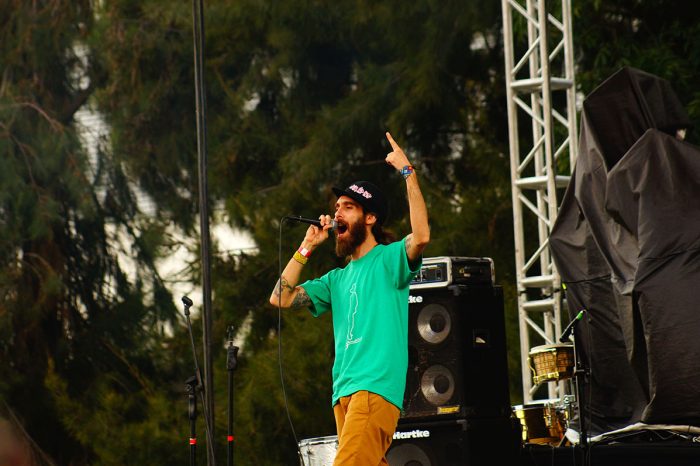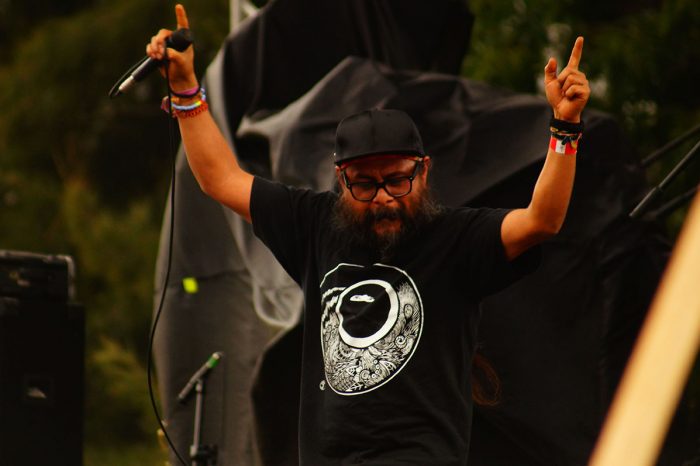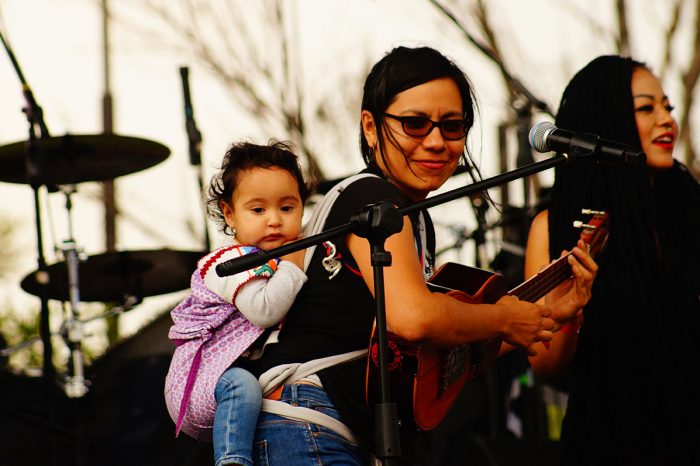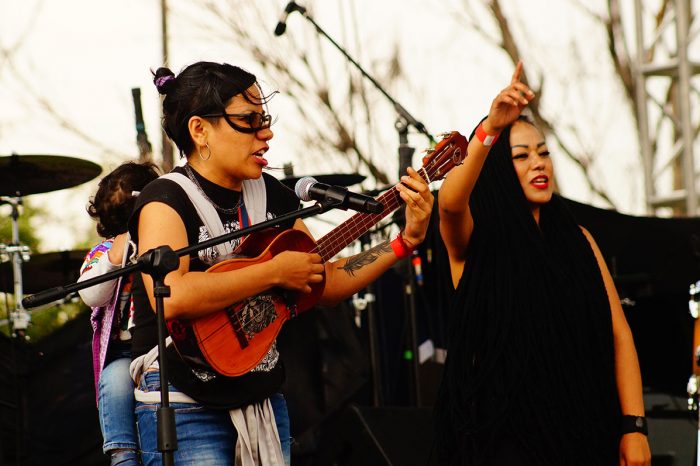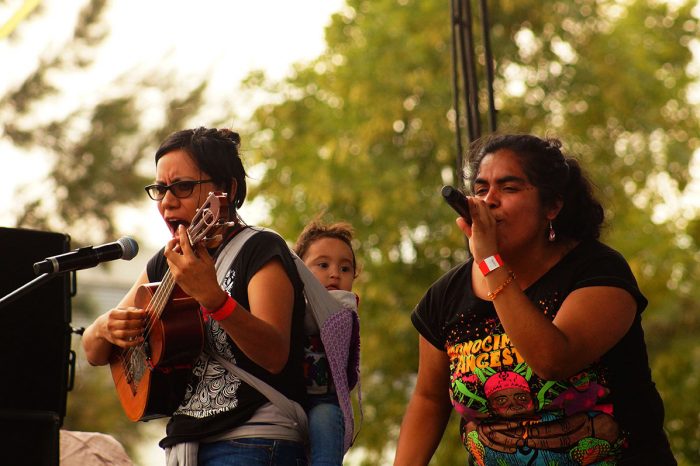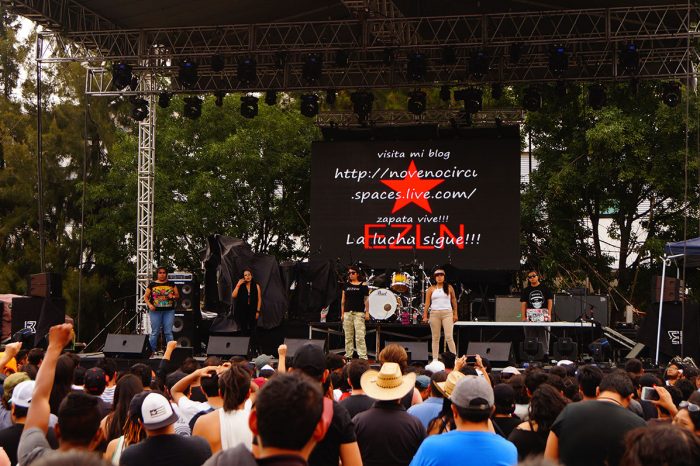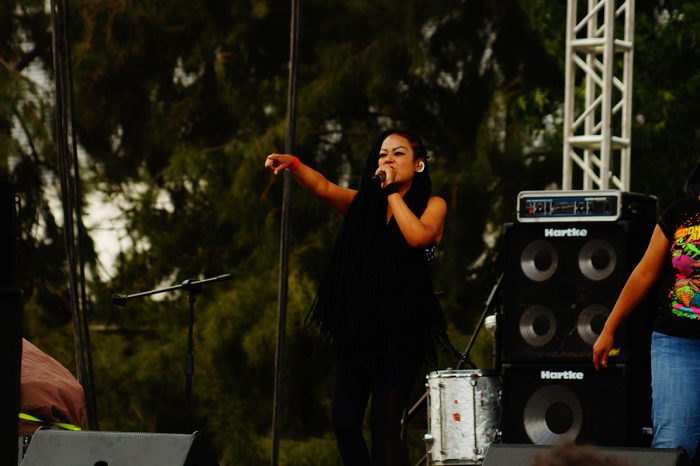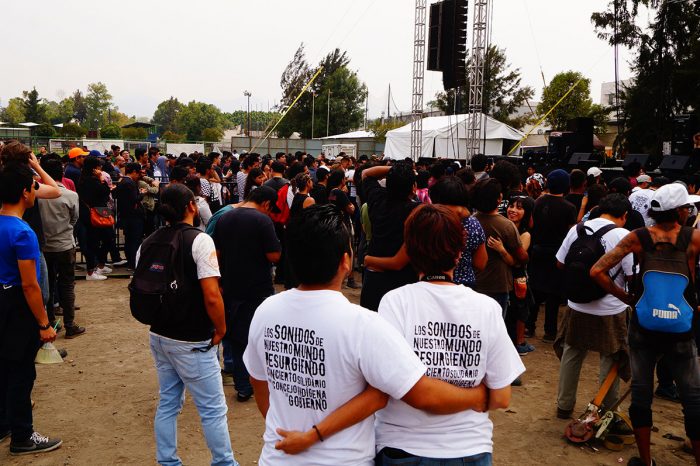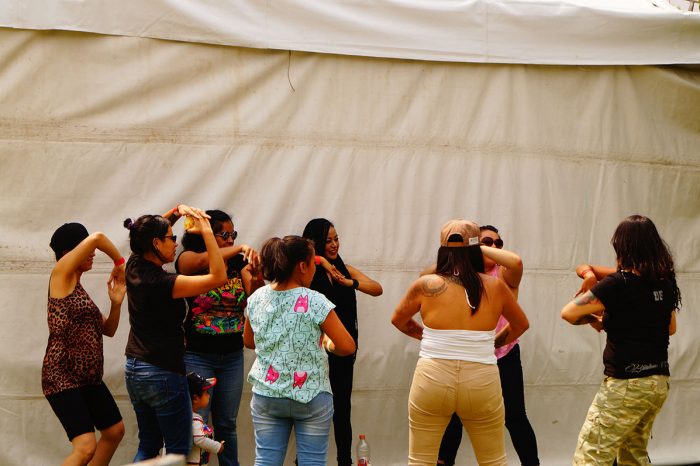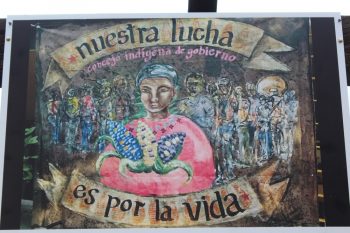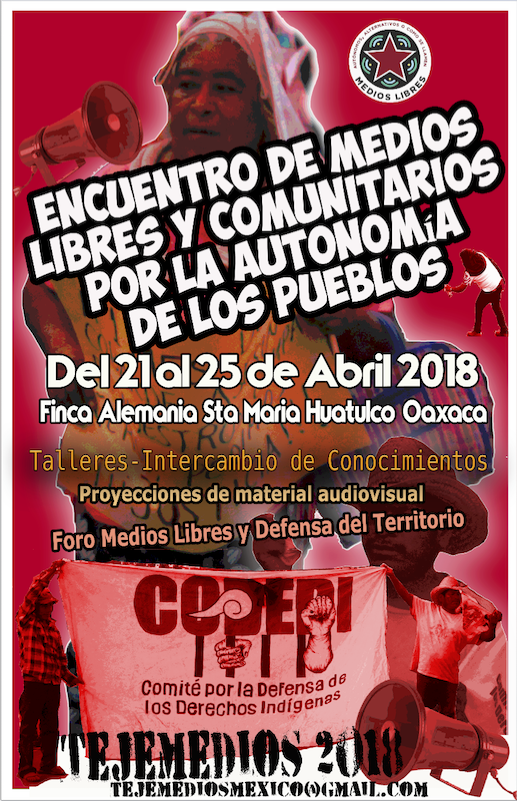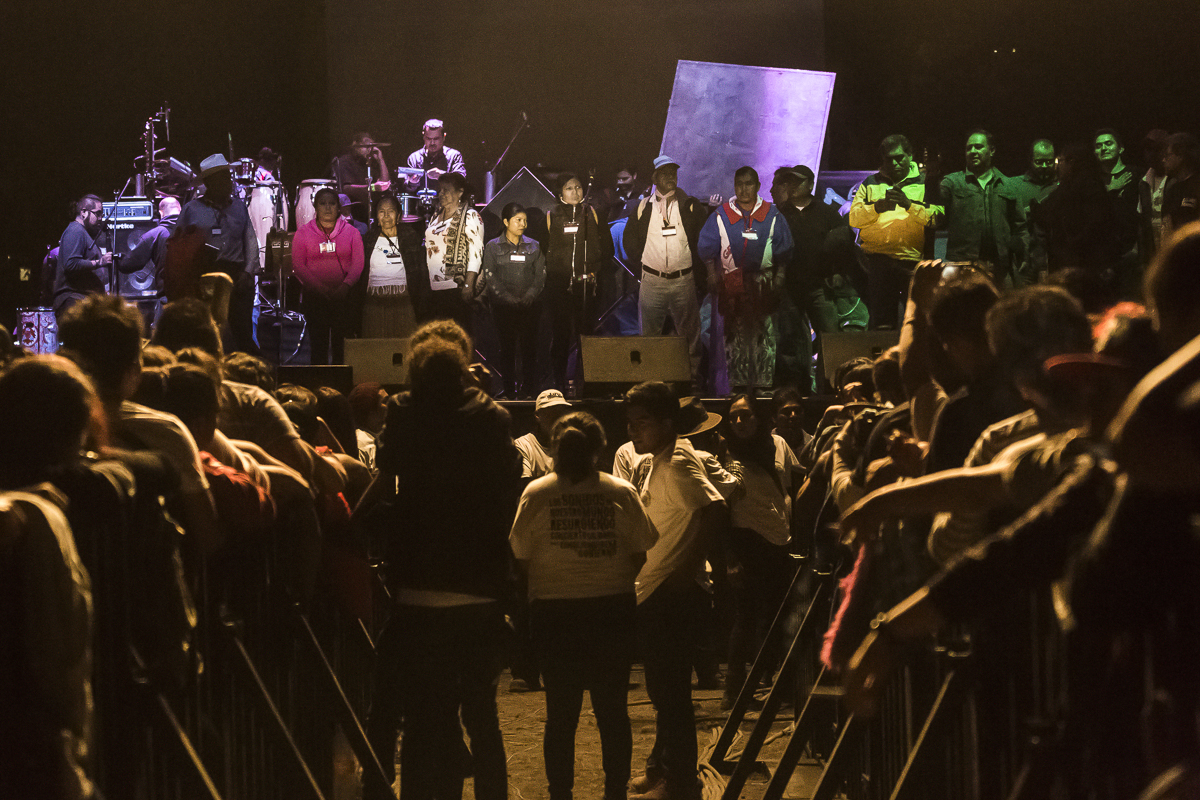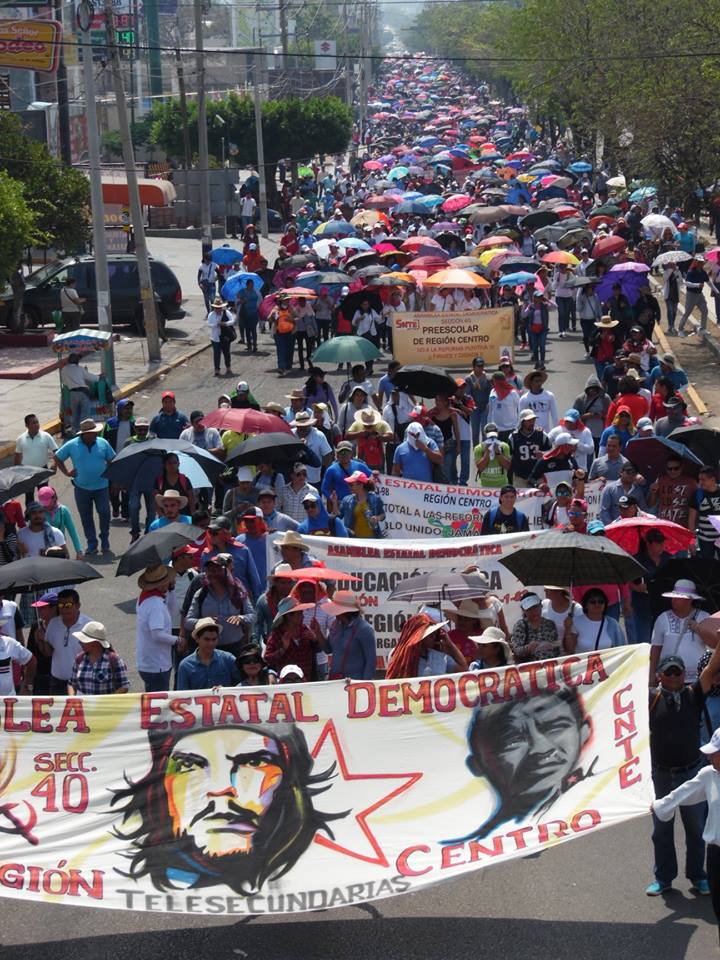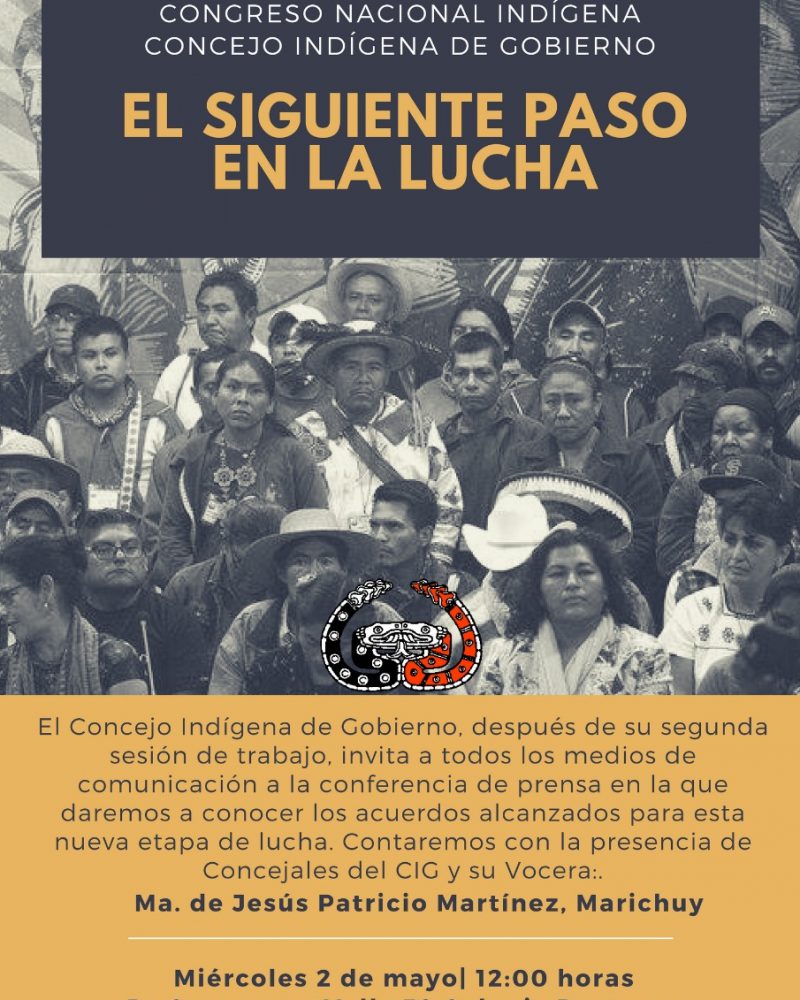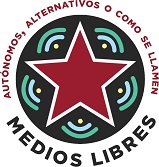
Author
(Español) Compañera del colectivo La Tinta narra su detención en un Centro para Migrantes de México tras participar en Chiapas en el 1er Encuentro de Mujeres que Luchan [Crónica]
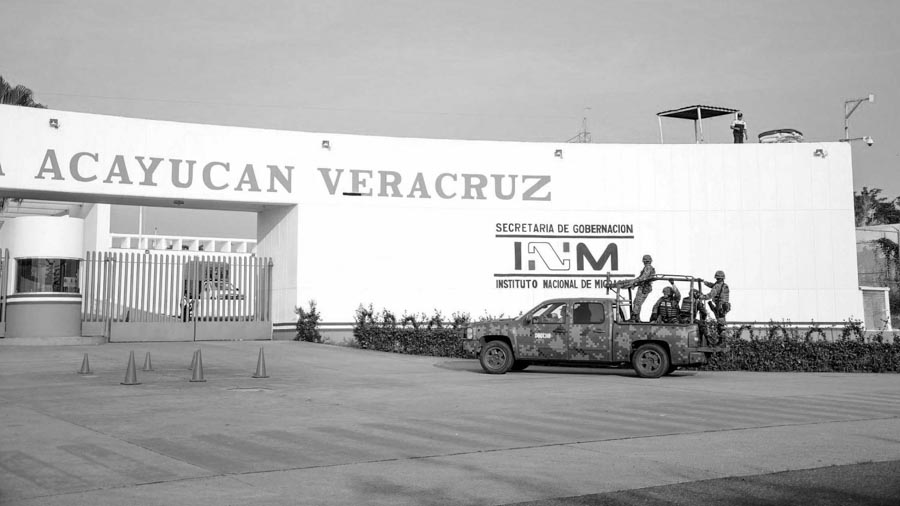
En el mes de marzo, La tinta viajó a México a realizar la cobertura del “Primer Encuentro internacional, político, artístico y deportivo de mujeres que luchan”. En un operativo policial en la ruta que une Ciudad de México con San Cristóbal de las Casas, Chiapas, retuvieron a una de nuestras cronistas, Débora Cerutti. Aquí la primera parte de un relato de primera mano sobre las 13 horas de detención en un Centro para Migrantes.
Por Débora Cerutti para La tinta
Acayucan, Veracruz, México. 12 de la noche. Retén policial en la ruta. Huelo a peligro. Sudo hormonas. Aumento la frecuencia cardíaca. El miedo paraliza, me dije a mi misma. Reacciono y activo protocolos básicos de seguridad. Los invento en ese momento.
Había salido a las siete de la tarde de San Cristóbal de las Casas, Chiapas, rumbo a Ciudad de México. El avión de vuelta a Argentina salía dos días después.
Llamo por teléfono a Jaime. Le pido que se comunique con mi amiga Mariana. Que no se preocupen. Que permanezcan atentos. Que no tenía mi pasaporte. Que no lo encontraba. Que debía estar en la casa de Mariana, en Ciudad de México, aunque estaba segura de que lo había cargado. Que iba a pasar la noche en un lugar llamado “Centro para migrantes” y que al amanecer me dejarían ir, cuando llegara el personal a las oficinas y chequearan mi identidad.
El aquietamiento
La última vez que había estado en México, fue hace dos años atrás. Un viaje de siete meses en el que recorrí decenas de experiencias organizativas que me enamoraron. Entre ellas, el zapatismo. En marzo de este año regresé al sureste mexicano con la tarea de cubrir para La tinta un evento convocado por el movimiento zapatista: el Primer Encuentro internacional, político, artístico y deportivo de mujeres que luchan. Mi corazón estaba ensanchado.
El encuentro terminó. Decidí quedarme unos días más en San Cristóbal para terminar de organizarme junto a otras seis mujeres en el trabajo colaborativo de prensa que nos habíamos propuesto durante el encuentro. Luego de esos días, iría a la costa de Chiapas a visitar a tres generaciones de mujeres y el mar. La noche antes de viajar comencé a sentirme mal. La maldición de Moctezuma parecía haber hecho lo suyo en mi estómago. Perdí el pasaje que había comprado y me quedé un par de días más en San Cristóbal.
Eso condicionó la vuelta. Debía volver sola a ciudad de México atravesando algunos retenes que sabía que existían. Conocía de los filtros migratorios por mi viaje anterior. Decidí no dormir y quedarme atenta a las probables paradas del colectivo en que la Policía Migratoria tiene un procedimiento muy aceitado: se sube al autobús, te mira, te alumbra con una linterna, reconoce tus rasgos en base a fenotipos y decide pedirte o no los documentos.
Desde la salida de San Cristóbal pasé tres retenes. En el tercero, todavía en el estado de Chiapas me pidieron documentos. Les mostré mi DNI, lo tomaron en sus manos y me lo devolvieron. Se bajaron. El colectivo siguió andando. Mi cuerpo liberó hormonas que mantuvieron la sensación de miedo pero permitieron que mi organismo actuara.
Siempre me costó dormir en los colectivos. A veces, cuando logro conciliar el sueño, se despierta mi mente y mi cuerpo queda paralizado. Por eso, desde hace un tiempo, decido mantener los ojos abiertos, los sentidos en alerta cuando viajo. Leo. Pienso. Miro por la ventana. Recuerdo. Hasta que me vence el sueño y caigo en la posibilidad de esa parálisis de la que soy consciente y dura segundos, pero que se manifiesta como eternidad. Es el tránsito del sueño a la vigilia: la parálisis del sueño.
Bajé la guardia a las 23 horas, un jueves 15 de marzo, en ese último retén. Me quedé profundamente dormida, sintiendo que ya no había peligro ni posibilidad de parálisis.

Llave de cintura
El estado de Veracruz es el paso obligado de aquellas personas que migran desde Centroamérica hacia Estados Unidos. De allí que le llaman “llave de cintura”, metáfora que representa el anudamiento, la limitación en el transitar libremente. Allí la linterna me iluminó el rostro y me despertó. Caí una vez más entre los fenotipos de personas que la migra estaba buscando.
—Documentos.
—Ya me los pidieron en el retén anterior.
—Este es otro. Documentos.
—Aquí está.
—Su pasaporte.
—Ese documento fue válido en el retén anterior.
—Este es otro. Pasaporte.
Me pongo nerviosa. No encuentro el pasaporte. Reviso mi mochila de mano. No está allí. Me bloqueo. Les digo que no lo tengo conmigo. Que tengo escaneado las primeras hojas de esa identificación en la computadora. Que no. Que necesitan tenerlo con la fórmula migratoria que me habían dado al ingresar al país. Que junte mis cosas y me baje.
Desciendo del colectivo, el chofer afirma que yo no venía sola, no entiendo por qué. Yo le digo que sí, que no había nadie conmigo. Insisten en mi pasaporte. Mi memoria insiste en no recordar qué había hecho con él. No pasan más de cinco minutos en toda esta secuencia: sin dudarlo, el chofer baja mi mochila grande del colectivo, se sienta en su butaca y arranca.
Miro el reloj de mi teléfono celular, son las doce de la noche, batería cargada, apenas una línea de señal. Miro a mi alrededor, veo el colectivo que se va, la ruta casi vacía, la noche oscura, una tienda Oxxo a lo lejos y una tienda de campaña con luces blancas que iluminan los rostros. Me percibo como la única mujer rodeada de policías. Recuerdo una frase: “Ningún ser humano es ilegal”.
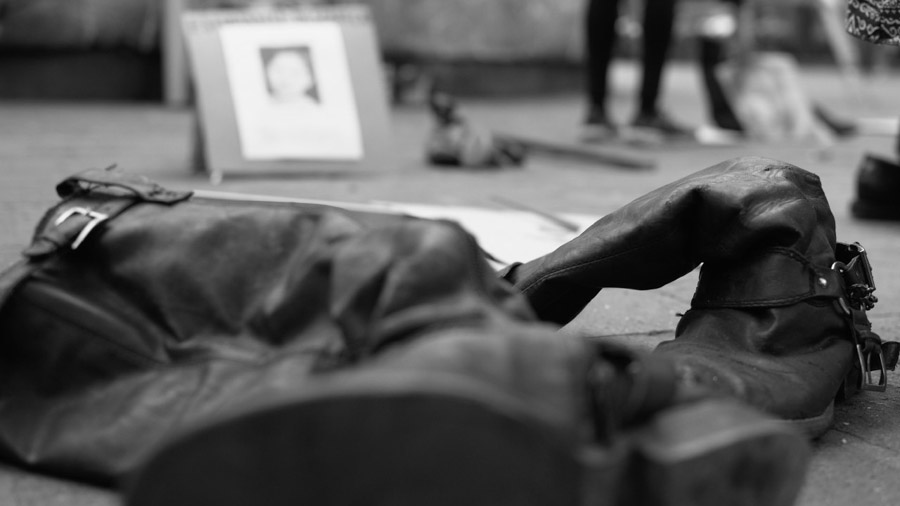
Foto:Colectivo Manifiesto
La jauría y la perrera
Me dicen que me van a trasladar. Me suben a una combi enrejada. Me tienen media hora allí arriba encerrada, sin posibilidad de bajarme. Con dos jóvenes hermanos, uno de ellos menor de edad. Ellos en silencio. Yo golpeando la puerta para que me dejen salir. La migra pasa por el costado y disimula la sordera. Vuelve el conductor de la perrera. Se sube y enciende el motor. Comienzan los once kilómetros de mayor incertidumbre en el viaje en México.
Empiezo a borrar las imágenes de la cámara de fotos en el camino, las del Encuentro de mujeres. Borro toda la información del teléfono. Pienso en las 47 mujeres que denunciaron violaciones y torturas en San Salvador Atenco, uno de los 125 municipios del Estado de México, ubicado al oriente. Allá en 2006, cuando 5 mil efectivos policiales se desplegaron cual jauría sobre la comunidad rural y reprimieron una protesta contra la construcción de un aeropuerto.
Pierdo la señal del teléfono por completo.
Pienso en los excesos de las autoridades. En los operativos impunes, en el poder que poseen las fuerzas policiales, en su formación violenta y su capacidad para realizar torturas físicas, psicológicas y sexuales. En su capacidad para desaparecer personas.
En esos once kilómetros de traslado al Centro de Migrantes, intento identificar señales en el afuera. Intento no tener miedo. Intento pensar con la cabeza en frío y el corazón caliente. Carteles, nombres, luces. ¿Qué haría ante un intento de violación? ¿Qué si me secuestran? ¿Serían capaces?
Atenco, insistente imagen metafórica mientras transito encerrada en la perrera hacia un lugar desconocido, rodeada de hombres uniformados.
(Español) Imágenes de “Los sonidos de nuestro mundo resurgiendo”.
El pasado 28 de Abril en la CDMX se realizó un concierto solidario en apoyo al Concejo Indígena de Gobierno (CIG) . Aquí el registro visual del evento en donde musiqueros solidarios, colectivos, organizaciones y redes de apoyo al CIG, acompañados por los miles de asistentes al evento; cantaron, escucharon la palabra del CNI , y bailaron hasta hacer retemblar en su centro la tierra.

